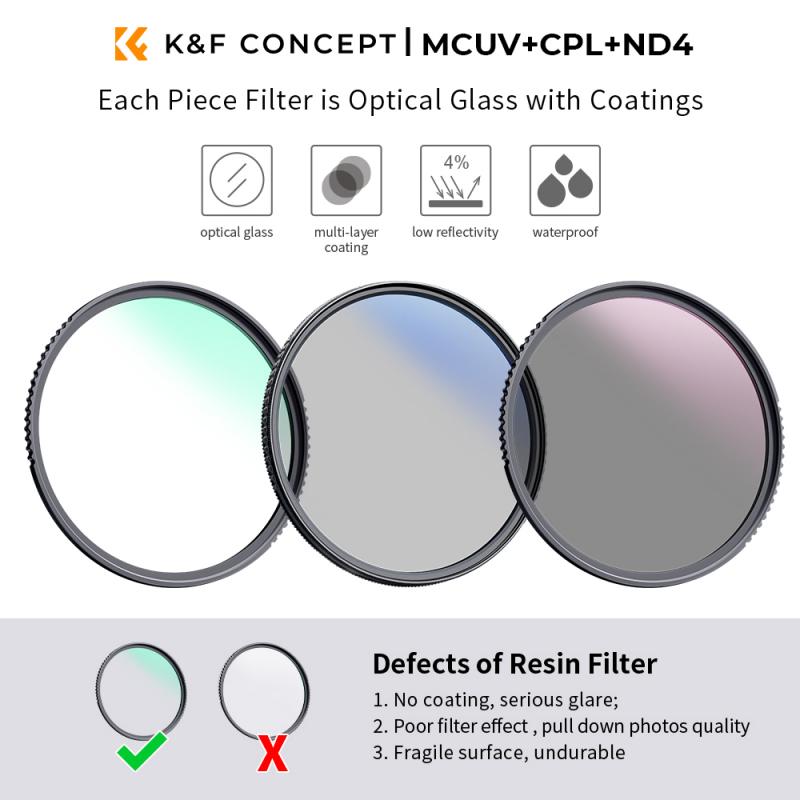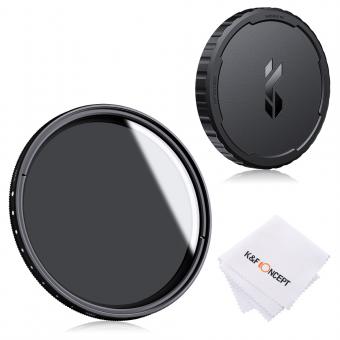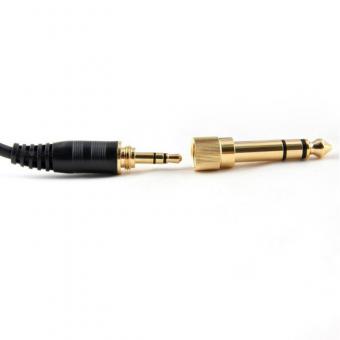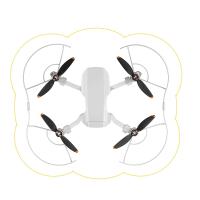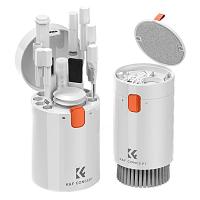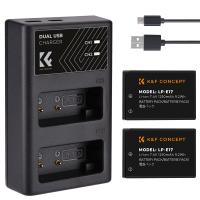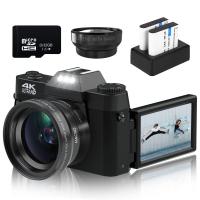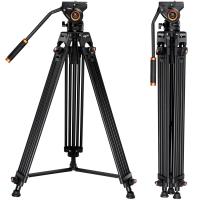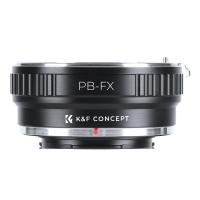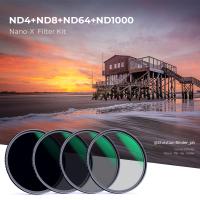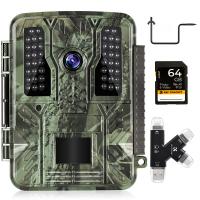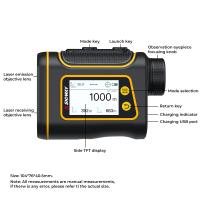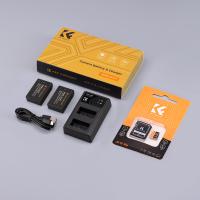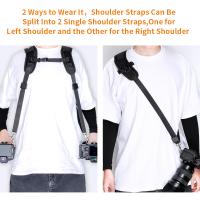What Does Nd Filter Do ?
An ND filter, or neutral density filter, is a type of camera filter that reduces the amount of light entering the camera lens without affecting the color or hue of the image. This allows photographers to use slower shutter speeds or wider apertures in bright conditions, which can create a variety of creative effects such as motion blur or shallow depth of field. ND filters are commonly used in landscape photography, where they can help to balance the exposure between the bright sky and darker foreground. They are also useful in portrait photography, where they can allow for wider apertures and shallower depth of field in bright sunlight. ND filters come in different strengths, measured in stops, which indicate how much light they block. Common strengths include 1-stop, 2-stop, and 3-stop filters, although stronger filters are also available for extreme conditions.
1、 Definition of ND filter
Definition of ND filter:
An ND (Neutral Density) filter is a type of camera filter that reduces the amount of light entering the camera lens without affecting the color or hue of the image. It is essentially a darkened piece of glass or plastic that is placed in front of the lens to reduce the amount of light that reaches the camera sensor.
What does ND filter do:
ND filters are commonly used in photography and videography to achieve certain creative effects or to overcome technical challenges. For example, if you want to capture a long exposure shot of a waterfall or a cityscape during the day, you may need to use an ND filter to reduce the amount of light entering the camera and prevent overexposure.
ND filters can also be used to achieve a shallow depth of field in bright conditions, or to capture motion blur in a moving subject. They are particularly useful for landscape and outdoor photography, where the lighting conditions can be unpredictable and challenging.
In recent years, ND filters have become increasingly popular among drone photographers and videographers, as they allow for smoother and more cinematic footage in bright daylight conditions. Some ND filters are specifically designed for use with drones, and can be easily attached to the camera gimbal.
Overall, ND filters are a versatile and essential tool for any photographer or videographer looking to achieve creative and technically challenging shots in a variety of lighting conditions.

2、 Types of ND filters
What does ND filter do?
An ND (Neutral Density) filter is a type of camera filter that reduces the amount of light entering the camera lens without affecting the color or hue of the image. ND filters are commonly used in photography and videography to achieve certain creative effects, such as blurring motion or creating a shallow depth of field in bright lighting conditions.
ND filters work by blocking some of the light that enters the camera lens, allowing the photographer to use a slower shutter speed or wider aperture without overexposing the image. This can be particularly useful in situations where the lighting is too bright for the desired effect, such as when shooting waterfalls or other moving objects.
Types of ND filters:
There are several types of ND filters available, each with different levels of light reduction. The most common types of ND filters are:
1. Fixed ND filters: These filters have a set level of light reduction, such as 2 stops, 4 stops, or 10 stops. They are ideal for situations where the lighting conditions are consistent.
2. Variable ND filters: These filters allow the photographer to adjust the level of light reduction by rotating the filter. They are ideal for situations where the lighting conditions are constantly changing.
3. Graduated ND filters: These filters have a gradual transition from clear to dark, allowing the photographer to balance the exposure between the sky and the foreground in landscape photography.
4. Reverse ND filters: These filters have a darker area in the center, gradually becoming lighter towards the edges. They are ideal for shooting sunrises or sunsets, where the brightest part of the image is in the center.
In recent years, there has been a growing trend towards using ND filters with higher levels of light reduction, such as 15 or 16 stops. These filters allow photographers to achieve long exposure times even in bright daylight, creating stunning images with blurred motion and smooth water effects.
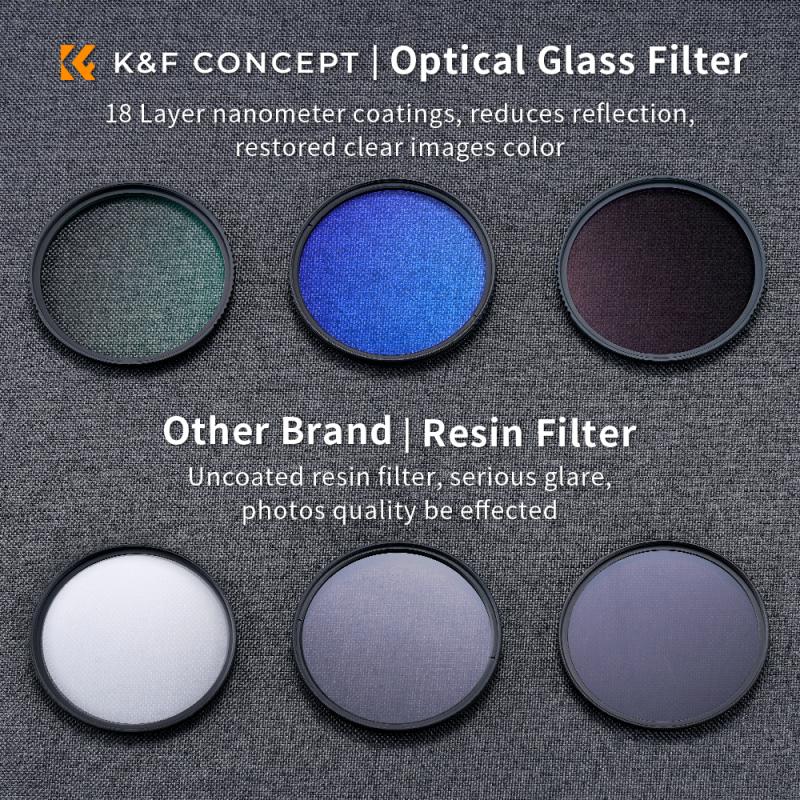
3、 How to choose the right ND filter
What does ND filter do?
An ND (Neutral Density) filter is a type of camera filter that reduces the amount of light entering the camera lens without affecting the color or hue of the image. ND filters are commonly used in photography and videography to achieve certain creative effects, such as blurring motion or creating a shallow depth of field in bright lighting conditions.
ND filters come in different strengths, measured in stops, which indicate how much light they block. For example, a 3-stop ND filter reduces the amount of light entering the lens by three stops, while a 10-stop ND filter reduces it by ten stops. The higher the number of stops, the darker the filter and the more light it blocks.
How to choose the right ND filter?
Choosing the right ND filter depends on the lighting conditions and the effect you want to achieve. For example, if you want to blur motion in bright daylight, you may need a higher-strength ND filter, such as a 6-stop or 10-stop filter. On the other hand, if you want to create a shallow depth of field in low light conditions, a lower-strength ND filter, such as a 1-stop or 2-stop filter, may be sufficient.
It's also important to consider the quality of the ND filter. Cheaper filters may introduce color casts or reduce image sharpness, while higher-quality filters are designed to minimize these issues. Additionally, some filters are designed specifically for certain types of photography, such as landscape or portrait photography.
In recent years, there has been a trend towards using variable ND filters, which allow you to adjust the strength of the filter by rotating it. These filters can be more convenient than carrying multiple fixed-strength filters, but they may introduce some image quality issues, such as vignetting or color casts, at extreme settings.
Overall, choosing the right ND filter requires some experimentation and understanding of the effect you want to achieve. It's worth investing in a high-quality filter to ensure the best possible image quality.

4、 Advantages of using ND filters
What does ND filter do?
An ND (Neutral Density) filter is a type of camera filter that reduces the amount of light entering the camera lens without affecting the color or hue of the image. ND filters are commonly used in photography and videography to achieve certain creative effects or to overcome technical limitations.
Advantages of using ND filters:
1. Long exposure photography: ND filters allow photographers to use longer shutter speeds, which can create stunning effects such as motion blur in waterfalls or clouds.
2. Wide aperture shooting: ND filters can be used to shoot at wide apertures in bright sunlight, allowing for shallow depth of field and bokeh effects.
3. Video production: ND filters are essential for video production, as they allow filmmakers to maintain a consistent shutter speed and aperture while shooting in changing lighting conditions.
4. Balancing exposure: ND filters can be used to balance the exposure between the sky and foreground in landscape photography, preventing overexposure of the sky or underexposure of the foreground.
5. Protecting the lens: ND filters can also act as a protective layer for the camera lens, preventing scratches and damage.
In recent years, ND filters have become increasingly popular among drone photographers and videographers, as they allow for smoother footage and more cinematic effects. Additionally, with the rise of mirrorless cameras and electronic viewfinders, ND filters have become more versatile and easier to use, as photographers can preview the effects of the filter in real-time.
